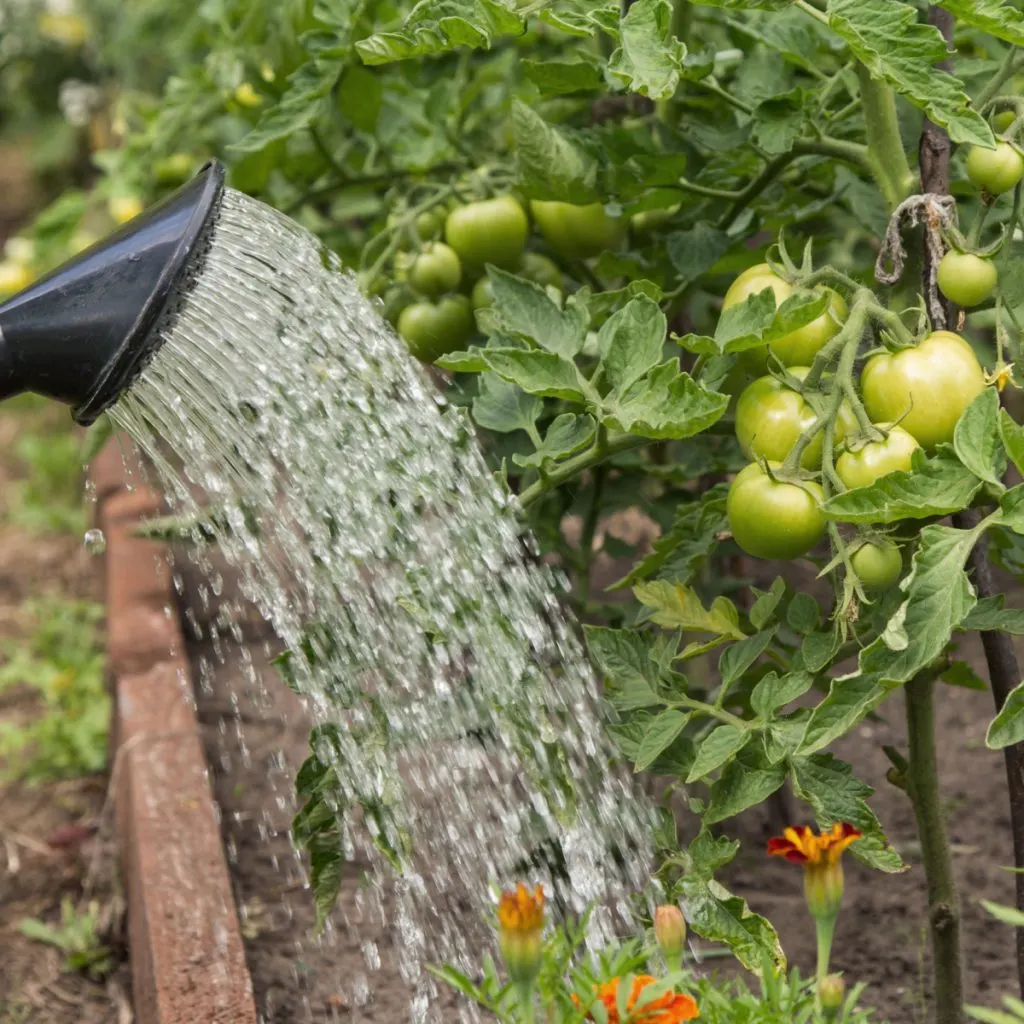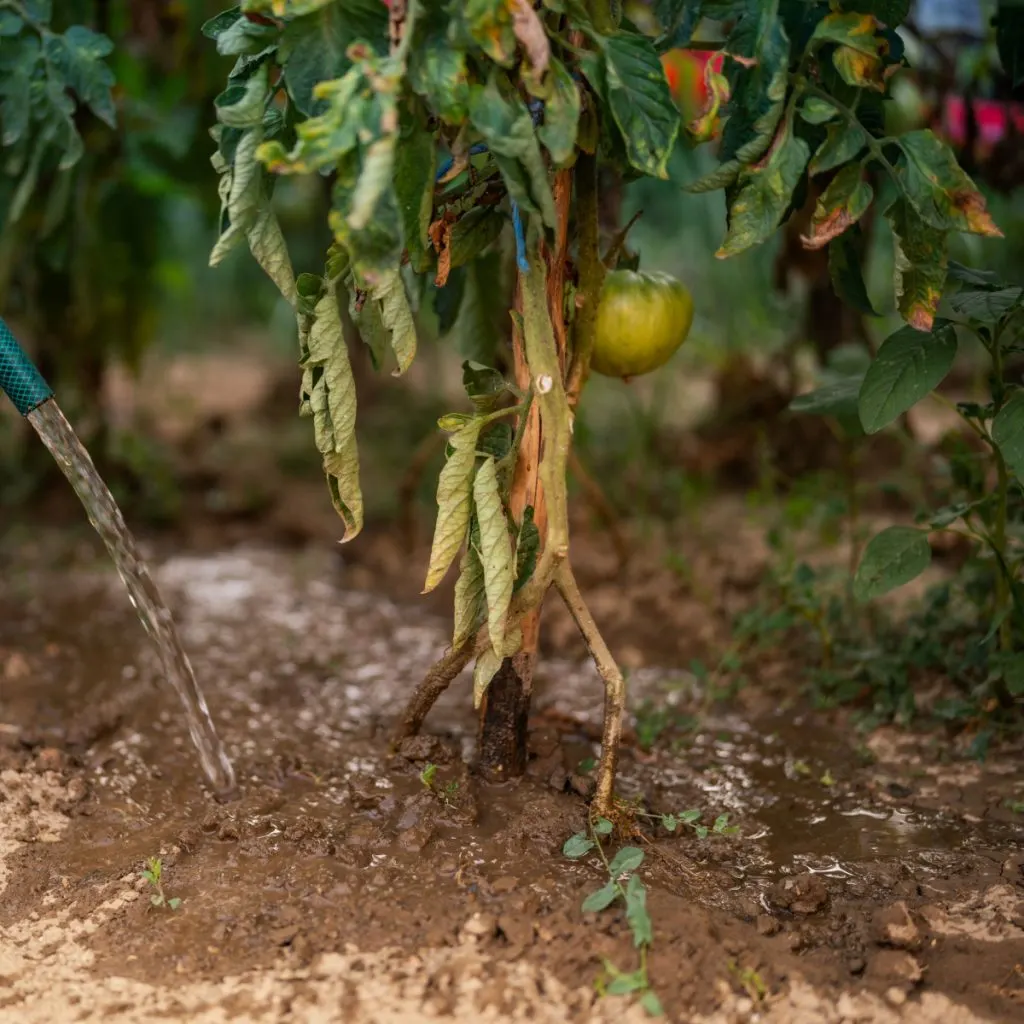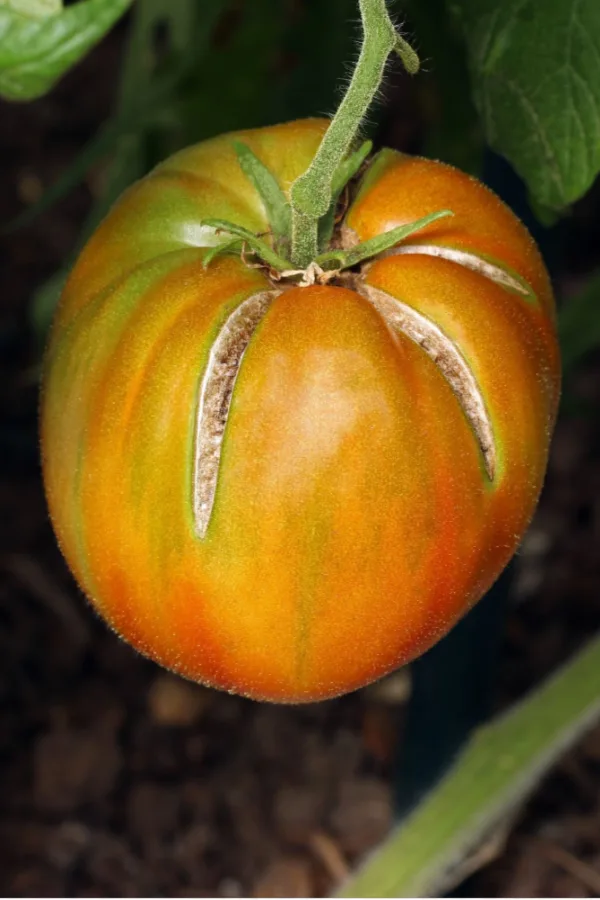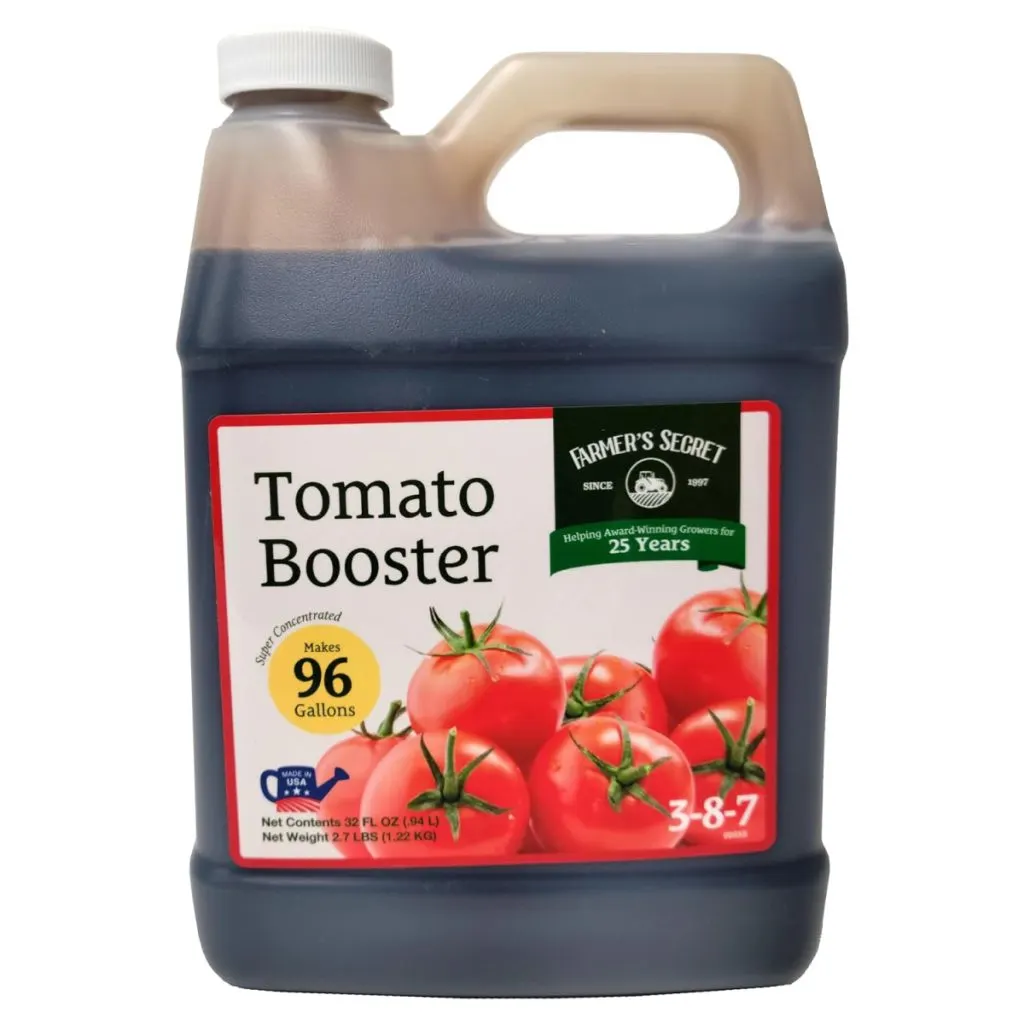When it comes to getting your tomato plants to produce a great big crop of tomatoes – how and when you water your plants in the summer can make a huge difference for your crop!
There is little doubt that tomatoes are one of the neediest plants of all in a vegetable garden. Not only do they require a lot of nutrients from the soil in order to grow and produce, they also need a lot of protection from potential pests and disease.
But what can really make or break tomato plants when it comes to their health and productivity is water – or more to the point – how much, how little and how often they get water to fuel their growth, blooms and fruit.

When you consider that tomatoes are made up of 95% water, it’s easy to see why water is so vital. But it’s not just the tomato fruits that need moisture to fill out. The branches, stems and roots of tomato plants are also made up of a tremendous amount of water too.
But, as you will see below, there is a fine line between plants getting too much water or too little. Which is exactly why watering them just right is so vital! With that in mind, here is a look at how and when to water tomato plants to perfection – whether you grow them in a traditional garden setting or in a container.
The Best Way To Water Tomato Plants In Summer
How you water your tomato plants first depends of how and where you grow your plants. When growing in the ground, whether it be in a traditional garden or raised bed space, your plants’ watering needs will be far different than if you grow your tomatoes in containers or grow bags.
With that in mind, we will take a look at how to water best with each growing method, starting with tomatoes growing in the ground.
How To Water Tomato Plants Growing In The Ground – The Best Way To Water Tomato Plants
For those that grow their tomatoes in the ground, the biggest mistake often made when watering is actually watering too often and too much.

The secret to success when watering in-ground tomatoes is to water less often, but more thoroughly. Unfortunately, if you water your plants every day, the roots never drive deep into the soil. Instead, they stay up close to soak in the constant moisture.
This actually harms the tomato plant in several ways. First and foremost, the plants develop far fewer roots. That in turn, means there is less ability for the plant to soak in nutrients and moisture from the soil. But those shallow roots also allow the plant to dry out quickly in the hot summer sun. Even worse, it also makes the plant weak and vulnerable to toppling over in storms or when loaded with fruit.
More Trouble For Over Watered Plants…
But perhaps the biggest issue of all with overwatered plants is that the roots swell and become water-logged. When this occurs, they are unable to take in any nutrients or moisture. And the plant begins to weaken with yellowing or curling leaves.
Unfortunately, many gardeners think at this point their plants must need more water. And as they water again, the plants suffer even more. If all of that wasn’t enough bad news for overwatering, it can also lead to cracked and split tomatoes on the vine. This is because the fruit has too much moisture, causing the skin to burst open.

The Best Way To Water Tomato Plants In The Ground
Once plants are established (3 to 4 weeks old), unless you are living in a desert or in an extremely hot and arid climate, tomato plants in the ground should be watered only a few times a week. And that is only if no rain has fallen during the week.
Through the summer, tomato plants need a total of about 1 to 1.5 inches of water per week. When you do water, it should be low and slow. Water with a slow or weak stream, letting the water penetrate down deep in the soil. This will allow the roots to grow down deep as well.
So what constitutes 1 to 1.5 inches of rain per week? If you water your plants a few times a week, that would be about 1/2 to 2/3rds of a gallon of water slowly watered into each plant per watering. This allows enough water to get down deep in the soil.
Watering Tomatoes Growing In Containers Or Pots – The Best Way To Water Tomatoes In The Summer
So what about tomatoes growing in containers or grow bags? Because of the limited soil space, these plants often need watering every day in the summer. In fact, sometimes twice a day depending on their size. But here again, you need to be careful not to overwater!

With container plants, the best method for success is to use an inexpensive soil moisture meter probe. These allow you to instantly read the soil moisture down at the root level. (These work great for in ground tomato checking too!) Affiliate Product Link: Soil Moisture Meter With Deep Probe
The moisture of the soil for tomato plants should range between 40% on the low end and 80% on the high end. Ideally, it’s best to keep it somewhere in the middle of that range. Only water when the moisture drops to near 40%. And never water when it is above or around 60%.
Last but not least, when growing in containers, make sure your pots or grow bags have good drainage holes. If the plant can’t shed excess water, it will suffer!
Summer Fertilizing – The Best Way To Water Tomato Plants
Last but not least, in addition to watering, don’t forget to keep your tomato plants powered up! Fertilizing tomato plants every ten to fourteen days with a light dose of liquid fertilizer will do wonders to keep plants both healthy and producing. See: How To Fertilize Tomato Plants In The Summer For A Bigger Harvest

When fertilizing, select a liquid fertilizer that is loaded with phosphorous and potassium. These two nutrients are the key energy sources for producing blooms and developing fruit. Look for a fertilizer with two to three times the amount of each versus nitrogen. Affiliate Product Link: Tomato Booster Fertilizer
Use at about 1/2 of the recommended strength. This will allow for lighter but more consistent doses of energy to keep your tomatoes producing.
Here’s to watering your tomato plants for big success this year – and to your best harvest ever!
This Is My Garden
Follow Our Facebook Page For Great Gardening Tips And Advice! This Is My Garden Facebook Page
This Is My Garden is a garden website created by gardeners, for gardeners. Jim and Mary Competti have been writing gardening, DIY and recipe articles and books and speaking for over 15 years from their 46 acre Ohio farm. They publish three articles every week, 52 weeks a year. Sign up today to follow via email, or follow along!
